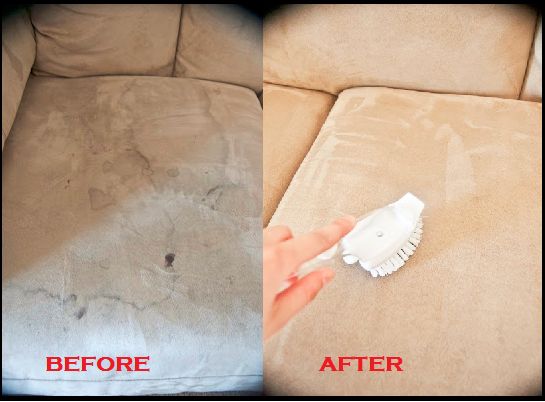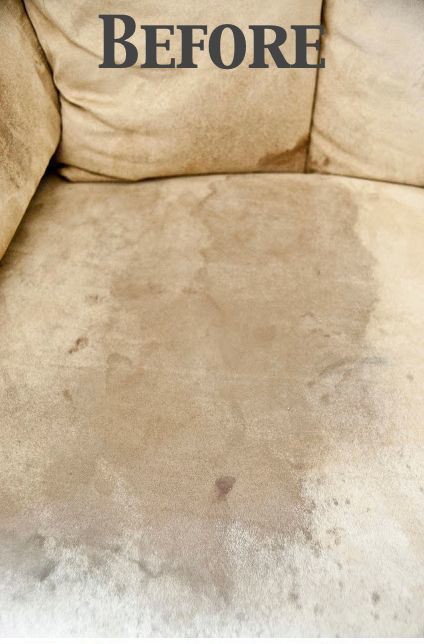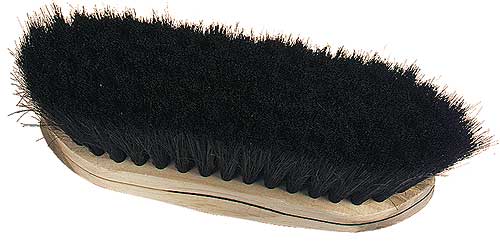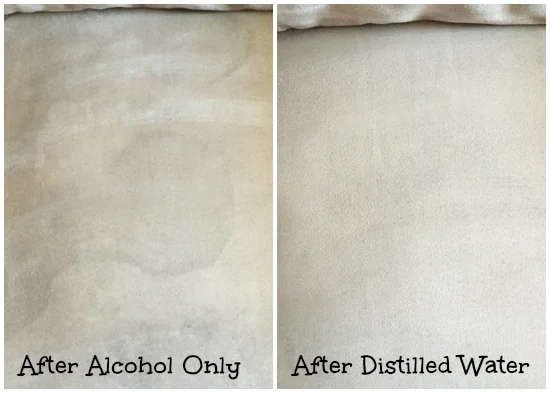How to Clean a Microfiber Couch
Many people send in requests or questions about how to clean their microfiber couch or sofa. Microfiber isn't for everyone just like leather isn't for everyone, but you'll have to make some sacrifices in order to keep your microfiber couch clean.
What is Microfiber?
First thing is first. Let's talk about what microfiber is and why cleaning microfiber furniture is such a pain in the tuckus. Microfiber has very thin strands that can be made to look like suede or leather. This makes it an attractive fabric for sofas and couches. Microfiber also is quite durable and repels water so it tends to be suited for furniture because your home can take a beating. Furniture manufacturers and salespeople however, would like you to believe that they are impervious to stains and an indestructible investment.
Its just not true... Microfiber couches look like suede, but the fabric is made of polyester and nylon fibers. These fibers are about 100 times thinner than a human hair, so cleaning this material can be difficult. You can leave watermarks in a hurry on your brand new microfiber couch, if you're not careful. However, cleaning with solvents or laundering cushion covers gets the dirt out without the unsightly spots.
And if Frankie the dog likes to wipe his face on your couch (we know he does), then you'll be faced with the below situation.
Before you begin
What type of microfiber couch do you have? Before cleaning your microfiber couch, make sure to read its care instruction tag. Microfiber manufacturers use codes to indicate how to clean the fabric.
- W means you must use water based cleaning solution.
- S means you must use a “solvent” based cleaner
- S-W means you can use S or W type cleaners
- X means you can vacuum only (so, no water or solvent based cleaning solutions).
Never use bleach, acetone, carpet cleaner or upholstery cleaner on microfiber couches. If you are unsure about cleaning your couch yourself, schedule a consultation with a professional furniture-cleaning service.
And here's what you'll need.
- White cloth or sponge.
- Rubbing alcohol.
- Distilled water.
- Spray bottle.
- Hard bristle scrubbing brush.
- Soft bristle brush.
How to clean a microfiber couch
Your first step is to pour some rubbing alcohol into a spray bottle and spray it on the couch. Don’t be shy; spray on a liberal amount. Then, use your clean sponge or white cloth to start scrubbing.
The key here is to focus on one section at a time. It will make the job more palettable and you'll see the results of cleaning in sections. If you have visible stains (such as Frankie's drool), scrub hard until they disappear. You can always spray on more rubbing alcohol if needed. You should quickly see dirt lifting off onto your cleaning cloth or sponge.
The Aftermath.
Microfiber is finicky. Because of its fiber makeup, it will tend to harden after cleaning. This may cause streaks, runs or it may even be a bit "crisp". So what to do? The solution to that is to gently rub the hardened fabric with a soft scrub brush. You can use any type of brush really, as long as its not so abrasive that is damages your material. Pictured below is actually a horse brush! We're really looking to achieve the same result.
The special sauce...
Normally, most people would end here. There's an additional step however that proves to be useful for those who venture down the path of laboring over their own microfiber couches. Pour some distilled water into a spray bottle and spray it on the couch. It goes without saying that you need a NEW, CLEAN sponge or cloth in which to work into the couch until you can no longer see the water stains. The key here is distilled water - regular water will re-surface stains.
Allow it to dry, and then use the soft bristle brush again to loosen the fibers. Viola!
Image: www.lemonslavenderandlaundry.com






